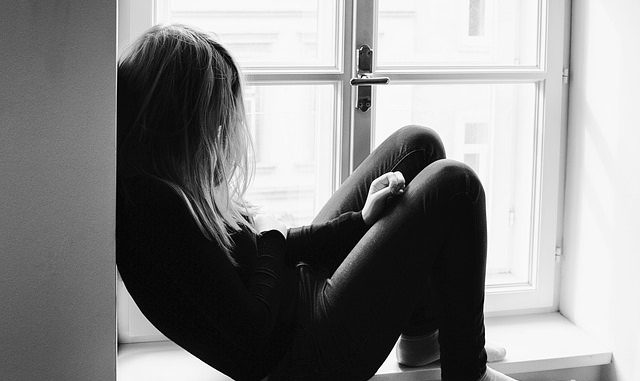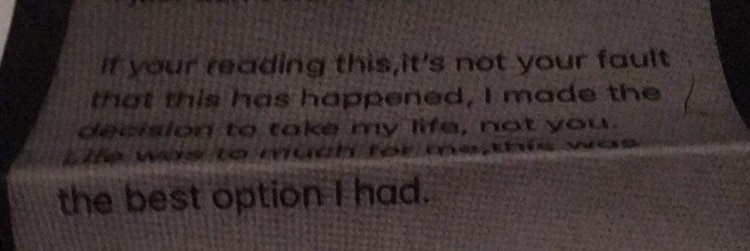
Two families have taken their daughters out of a Ramsgate school after they discovered they were self-harming.
They say the Year 7 Royal Harbour Academy pupils are among a small group who have been cutting and scratching themselves.
The mother of one pupil, who we are not naming due to her vulnerability, says she was distraught after being given a suicide letter written by her child that another parent discovered and sent on to the school.
The mum says she only found out her daughter was hurting herself after finding images on the girl’s mobile phone.
Suicide letter

She said: “I found images on her phone of self-harming. I contacted the school and spoke to the behaviour woman and she gave me a suicide letter my daughter had written saying she wanted to end her life and that she was being bullied. I was so shocked. I just bawled my eyes out. I couldn’t believe this had been going on and I had no idea about it.”
The father of another girl said his daughter’s behaviour had gone downhill and he had discovered self-inflicted injuries on her arms.
He said: “We took her out of school in January because she was self-harming and we found out kids were facetiming each other, encouraging the self-harm.
“We got a human being back, then she returned to school and her behaviour went downhill again. We had a meeting and were told she would get a buddy and someone to talk to, but it didn’t happen. She got worse and worse and then I discovered about 20 slits on her arm. “
The parents said a group therapy session was held at the school, but they say it was too large and the girls need one to one help.
Safety fears
Both parents took their children out of school last month and say they have contacted various mental health organisations to get help.
The father said: “We had reached the stage where we could no longer be guaranteed our daughter’s safety. We were told the kids could go to inclusion but there didn’t seem to be a cohesive way of dealing with things. The only way of breaking the cycle was to get them out. My daughter used to have laughter in her voice and that was gone, she didn’t see the point in anything anymore.”
The families, who have now applied to place their daughters in new schools, claim there has been minimal contact or support from RHA – something head teacher Simon Pullen disputes.
Mr Pullen said although he could not comment on individuals in such circumstances, work had been done with the families and would continue.
Bullying
Mr Pullen said any issues of bullying were dealt with firmly. He said: “Bullying in school does happen, it happens at every school. The important thing is being open and honest. As long as we know about it we can deal with it.”
Dealing with self-harm in schools

Mr Pullen said self-harming is another issue being faced by all schools.
He said: “Self-harming is an issue across all schools, not just ours. We do have students who self harm and we make sure that there are proper interventions to support them. This is a very small number of students. Our staff are trained so if they pick anything up they refer through child protection channels. We have a big team of people dedicated to children’s mental health.”
Support officer
Natalie Whitehead is a pastoral support officer at the school who, as part of her role, works with youngsters who self harm. She is part of a team which has staff on both the upper and lower sites of the academy.
She said the issue of self-harming comes in waves.
She said: “Sometimes it is prompted when the issue is brought up on a TV programme. Sometimes it is outside difficulties or bereavement. The majority are girls but it can be boys too.
“Some only do it once, some do it every day.It might be scratches on arms and wrists or, more seriously, hidden in places like thighs. We take each instance seriously.
“It tends to be in phases, so there will be a lot one month and then it dies down.
“It is small numbers, I have dealt with three over the past couple of weeks. The majority just need a bit of support, help with self-esteem and confidence building.
“There is counselling, we work with Early Help, CAMHS (child and adolescent mental health services), Orchard House, Charlton FC counselling service, whatever suits the individual student best.
“I also give them coping strategies, for instance wearing an elastic band on their wrist and ‘pinging’ it, then they get the urge – it is the same sensation but there is no scarring.
“I think we hear more about it because it is more open now, students will talk about it. They will come to me and say they have the urge or they have self-harmed. They know I am going to call home but maybe they feel it is easier if I do that.”
The statistics
Research by Public Health England shows that in 2016/17 there were 1,018 hospital admissions in Kent as a result of self-harm in those aged 10-24 years.
The last report by Thanet NHS Clinical Commissioning Group was published in 2015. The data shows that A&E attendances for self-harm in people aged under 25 from 2009/10 – 2013/14 in Thanet CCG was 854 cases.
But the report says there may be many more cases of young people self-harming. It states: “This activity data provided for self-harm does not necessarily fully reflect the scale of the problem of selfharm in children and adolescents.
“Research estimates that just over 12.6% of self-harm episodes result in hospital attendances. Some studies indicate that about 30% of adolescents who self-harm report previous episodes, with the majority not coming to medical attention.
“Examining the crude rate for 2011/12 to 2013/14 for self-harm admissions in children and young people up to 24 year olds shows that NHS Thanet has some of the highest rates. For instance, in young people aged 16 to 19, the self-harm admission rate for NHS Thanet is 15.1 per 10,000 compared to the county average of 8.8 per 10,000.”
Last year the NSPCC’s Childline service delivered 15,376 counselling sessions about self-harm to children and young people across the country.
NHS England says self-harm is more common than many people realise, especially among younger people. It estimates around 10% of young people self-harm at some point.
Spotting the signs
Young people often go to great lengths to hide their injuries. They may try and explain them away as accidents or keep themselves covered up in long-sleeved clothes even when it is hot. The common physical signs to look for include injuries to the head, wrists, arms, thighs and chest.
The emotional signs include depression; tearfulness and low motivation; becoming withdrawn and isolated; unusual eating habits; low self-esteem and self-blame, drinking or taking drugs.
Getting help
If you suspect a child or young person is self-harming, or considering it, there are things you can do. Listen and show empathy and understanding; talk it over to try and discover their self-harm triggers; build their confidence and show they can trust you; help them find new ways to cope.
Advice and support about self-harming is available via the NSPCC’s helpline on 0808 800 5000.
Children can call Childline on 0800 1111, 24 hours a day, seven days a week or visit www.childline.org.uk to chat online.

